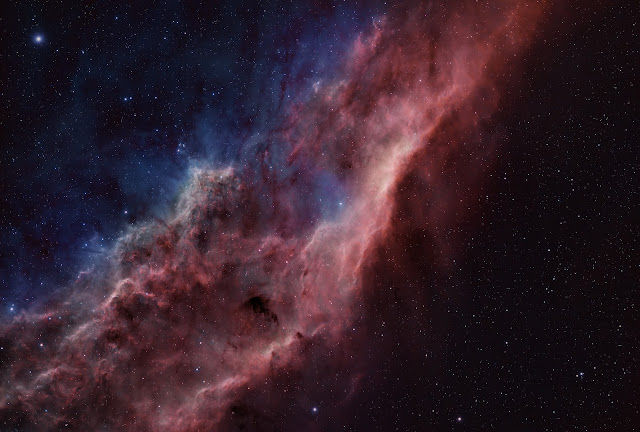Over the last few days I have had the opportunity to use starnet++ and re process the data. More happy with the image now with a star reduction.
Tuesday 31 August 2021
Sunday 29 August 2021
Ngc 7000 Narrowband.
The Curse of the new gear strikes again.
Yes the weather has not played ball for the last couple of weeks lending credence to the curse of the new gear for us astronomers. I am desperate and stupidly excited to create my first "Hubble Palette" style image using the Optolong Narrowband 36mm filters in the ZWO filter wheel. I did manage to get the filters installed with no issues and had to wait a week to test. All filters are parfocal and using the ZWO EAF "auto focusser" all gave pinpoints stars within 10 focus steps. Sometimes seeing can set the focus point with a difference of up to 30 steps so very happy with that. I first tested the Ha filter on NGC7000 and here is a stack of 12 x 5 minute exposures.
Sulphur 2 7nm Optolong Filter 18 x 10 Minutes
All Combined in the Hubble Palette RGB image.
Tuesday 24 August 2021
New arrivals
Arriving tomorrow from my favourite astronomical retailer Widescreen Centre https://www.widescreen-centre.co.uk/
Should be my new ZWO 7 position filter wheel, this is the new mk2 version that is slightly larger than the mark 1 and better compatibility with the newer ZWO cameras.
 No off axis guider used on my system so I will follow the set up here to create the correct 55mm back focus,
No off axis guider used on my system so I will follow the set up here to create the correct 55mm back focus,Along side it will be the 36mm unmounted LRGB from ZWO and 6nm narrow band filter sets from Optolong. I was incredibly impressed by Optolong's L-enhance tri band & L pro filter light pollution filter. Many images of their use can be seen in the previous posts. Unmounted filters will require fitting rather than them having a screw thread. 36mm are needed for the APS-C chip on the camera to avoid the vignette.
Images used from ZWO and Optolong websites.
Monday 23 August 2021
The Moon
Our nearest neighbour at 383,000 km from earth as of 23.30 ish on the 23rd August. Most will be unaware that during a lunar month the moon does not have a perfect circular orbit around the earth, and its distance to earth varies over the month by just over 50,000 km. Currently the moon is getting closer by a 1 km per second.
Friday 13 August 2021
Just 3 Persieds.
Sitting and facing in a direction opposite to where the camera is pointing is a guarantee for me anyway for a failure to capture anything of significance especially when meteors are involved. A beautiful evening spent on the sun lounger I saw some really bright meteors and a few really bright ones streaking through the Andromeda region and going south. The camera however was under our pergola and left overnight to see what it could find.(covered jusy in case it rained) ISO 1600 and 20 second captures are the best my Canon can hope for without an excess of noise anyway. So here is the result a composite of 3 images with 3 faint streaks across the sky looking east.
California Nebula
NGC1499 The California Nebula. Discovered in 1889 The California Nebula is an emission nebula in the constellation of Perseus, currently v...

-
Object: M45Type: Open Cluster Distance: 380Light Years (Approx) Constellation: Taurus Date : 27th October 08 Equipment: William Optics M...
-
Without doubt the finest of globular clusters visible in the northern hemisphere. Located outside the plane of our galaxy and some 25,000 li...













